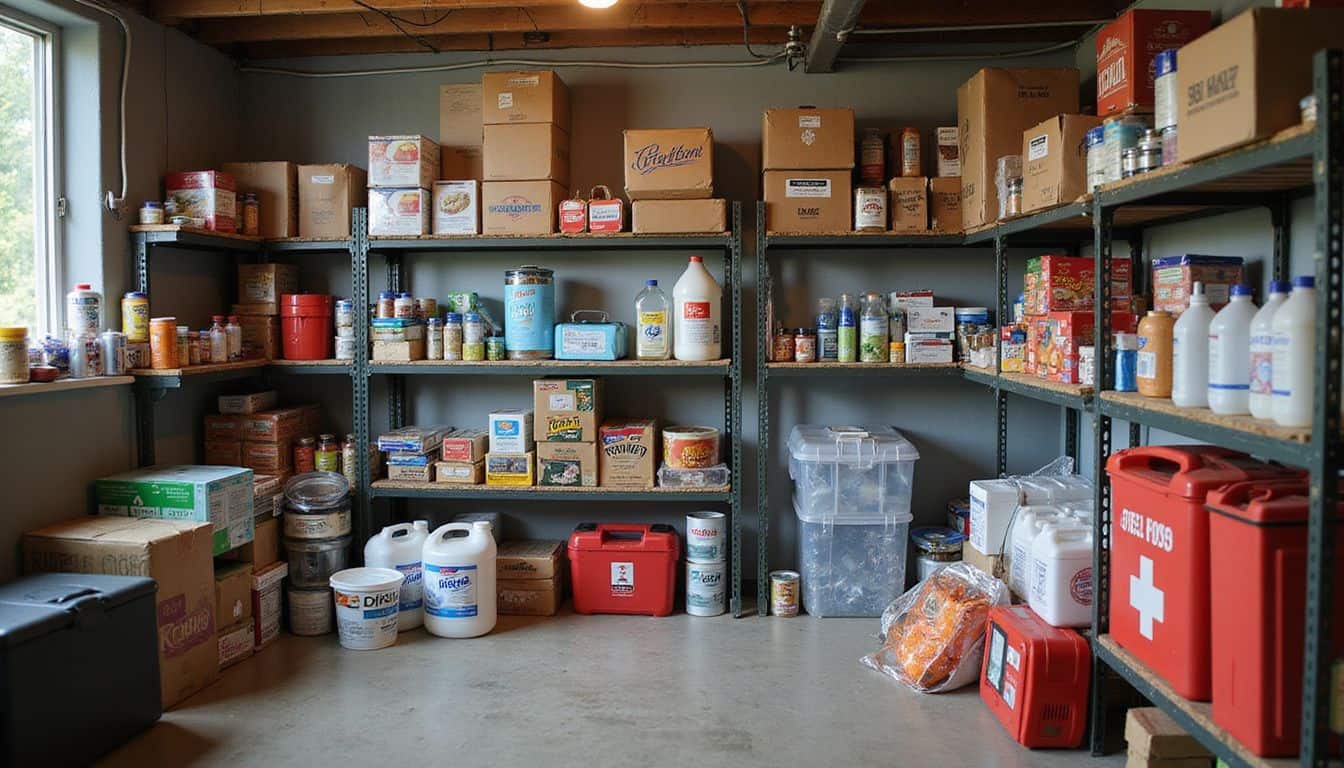Worried about how to keep your family safe if disaster hits and you can’t get supplies? Learning how to be a prepper means building skills and gathering essential tools before an emergency strikes.
This guide will show you easy ways to start storing food, water, hygiene products, first aid items, and much more. Keep reading for smart tips that can help you thrive when things go wrong.
Key Takeaways
Just 39% of American households have a clear emergency plan—yet having one ready can save lives during floods, fires, or power outages.
Keep emergency water stored—one gallon daily per person—for two full weeks, totaling 14 gallons each. Stock lasting, affordable food supplies such as rice (about $4.54 per 10 pounds) and beans (roughly $5.98 per 8 pounds).
Prepare grab-and-go emergency backpacks and at-home supply kits, stocked with essentials like N95 masks, reliable water filters (such as Lifestraw or Sawyer Mini), first aid items, and battery-operated radios.
Rotate stored food regularly using FIFO (First In, First Out) and check expiration dates every six months, keeping your supplies fresh and ready.
To handle sanitation in an emergency, use a five-gallon bucket lined with garbage bags and topped with sawdust or kitty litter—this reduces disease risks.
Table of Contents
Assessing Risks and Preparing a Plan

Knowing what risks you face is the first step to smart prepping. Your plan must match the real threats in your area, whether they’re floods, power outages, or food shortages.
Identify potential emergencies
Smart preppers begin by identifying realistic disasters that can affect them directly. For me, house fires scored a risk level of 9—these cause around 2,500 deaths each year in America.
Home invasions also rated a high 9, as they cause serious physical harm and emotional trauma. To stay ready for this kind of threat, I always keep a high cut ballistic helmet and other safety gear close by.
Cyber attacks came next with a risk score of 8, while hurricanes and floods ranked slightly lower at level 7.
A prepper without a risk assessment is just a person with a lot of canned goods.
Where you live heavily influences the threats that matter most to you. People in crowded cities face different dangers than rural residents. Start by writing a simple list of potential disasters in your region.
Rank them clearly by likelihood and seriousness. This approach lets you prioritize preparation efforts on real, relevant risks, instead of draining your resources on unlikely scenarios.
Develop a family emergency plan
Your family deserves a clear, ready-to-go emergency plan before disaster occurs. Yet only 39% of American families actually have one in place. Start with a reliable way to communicate, just in case cell phones stop working.
Choose two safe meeting points—one nearby your home and another a bit farther away. Draw out evacuation routes from your home, school, and workplace on actual paper maps. Save emergency contact numbers in everyone’s phones, and write them on wallet-friendly cards, too.
Each person should know exactly what they need to do in an emergency. Hold family drills two times a year, so everything feels automatic even under pressure. Pack emergency kits—bags filled with essentials and copies of the family plan—near the exits of your home.
Government websites offer free emergency planning templates so you don’t skip important details. These templates have suggestions you might overlook, such as what to do with pets or loved ones with special needs.
An effective emergency plan covers multiple situations like power failure and wildfires—different problems require different solutions. A full, thought-out plan saves time and reduces stress in real crises.
Keep one digital copy on everyone’s phone and printed ones in emergency kits. Putting together a good emergency plan takes little more than your time, yet can mean life or death during natural disasters.
Building a Foundation for Prepping
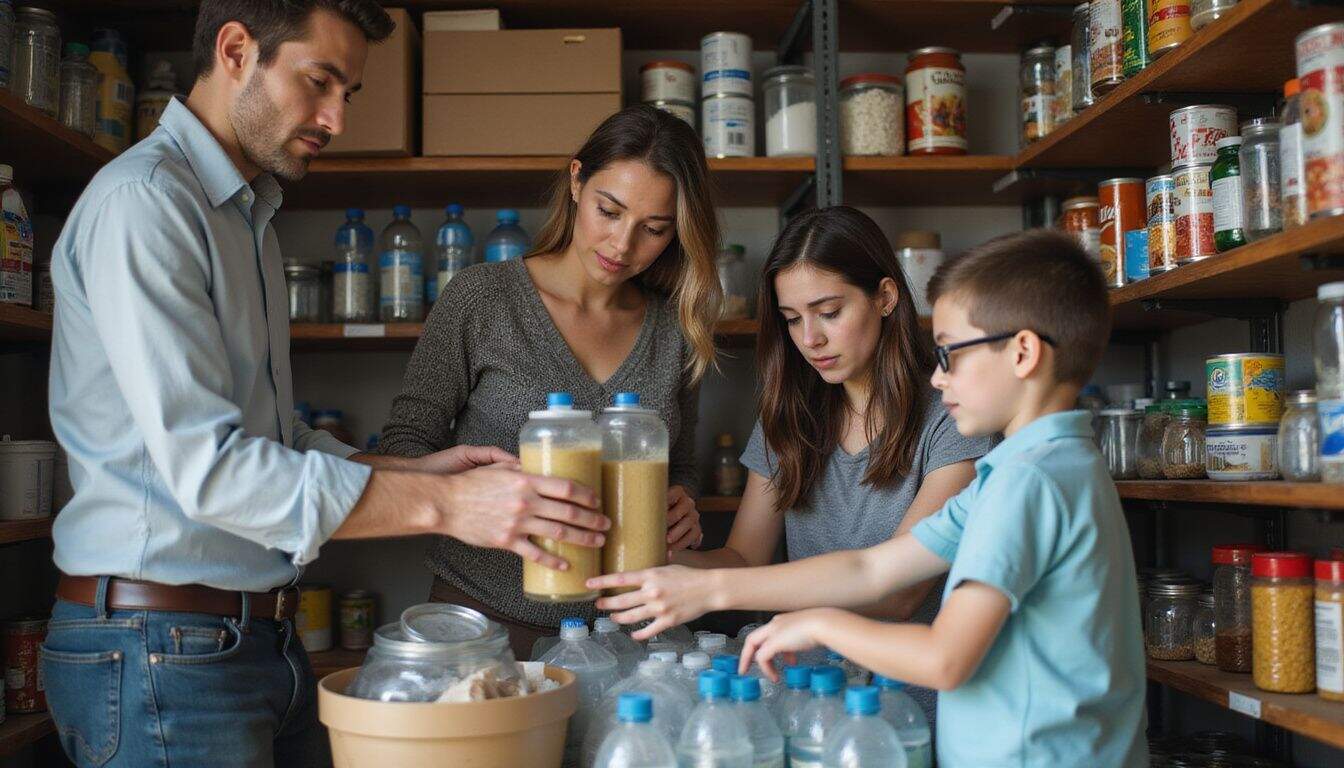
Prepping starts with small steps that grow into a solid safety net for tough times. Your first goal should be to gather enough food and water to last your family at least two weeks.
Start with basic food and water supplies
Food and water form the foundation of a good emergency prep strategy. Aim to store at least 14 gallons of water per person, which will comfortably last two weeks. This amount should cover drinking, cooking, and basic hygiene tasks.
For food storage, prioritize items that stay fresh over the long haul—like freeze-dried meals, which keep up to 25 years. Valley Food Storage offers impressive emergency food options you might appreciate.
Preparing doesn’t need to drain your wallet, either—a two-week supply for four people can cost under $35 at Walmart. Fill shelves with reliable, shelf-stable foods like dried pasta, rice, and peanut butter; they stay fresh over time.
Be sure to include tools that stretch your supplies and ease your stress. A reliable water filter, such as Lifestraw, can transform uncertain water sources into safe drinking water after your stored supply is used up.
Purification tablets provide big value yet take up little space—perfect for tight storage. Oxygen absorbers and a vacuum sealer will extend your food’s freshness significantly, reducing waste.
Stock your pantry with ready-to-eat snacks and basic ingredients needing minimal cooking. Select foods your family genuinely enjoys—that way, your rotation stays fresh, practical, and waste-free.
Establish short-term and long-term goals
After you stock up on basic food and water, it’s time to plan clear prepping goals. Short-term goals handle your urgent survival needs right now. Gather supplies to cover two weeks, including clean drinking water, canned and dried food, and personal hygiene items like soap and toilet paper.
My neighbor Jim managed his short-term goal in only a month—he prepared an emergency backpack filled with survival gear, battery-operated flashlights, and a well-stocked first aid kit.
He keeps all of it neatly stored in his basement for easy grabbing during a crisis.
Longer-term prepping means expanding your plans further. Aim to build a three-month food supply, thoughtfully stored and rotated, to keep foods fresh and usable. Include shelf-stable items like dry grains, vacuum-packed dried fruits, and pasta, clearly labeling them with expiration dates.
Organize your notes and instructions in a binder, listing where you store supplies and when each item expires. Smart preppers also spend time developing practical survival skills. Learn water purification methods, cooking without electricity—using kerosene burners or grilling with cast-iron skillets—and other essential outdoor survival lessons.
Courses offered by groups like the National Outdoor Leadership School are great resources for acquiring these valuable skills.
Food Prepping Essentials
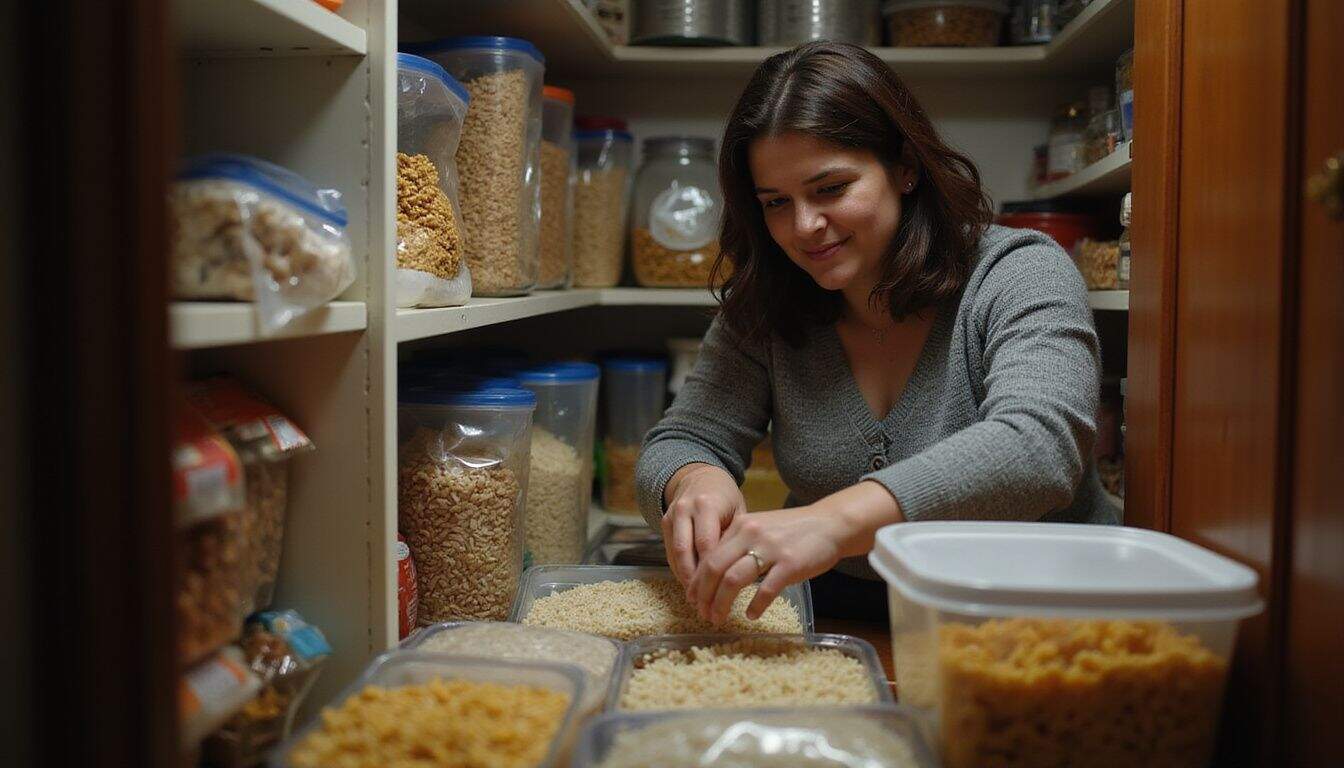
Your survival depends on smart food choices when disaster strikes. A well-stocked pantry with vacuum-sealed items, freeze-dried foods, and staples like rice and pasta can feed your family for months.
Creating a working pantry
A well-organized pantry can form the backbone of any solid emergency prep plan. To manage mine effectively, I use the FIFO (First In, First Out) method, so older items get used up first.
My shelves store enough supplies to feed my entire family comfortably for at least one month, even during unexpected situations. Clear storage bins with clear labels—listing food type and expiration—make this system easy and efficient.
Pantry basics like dry pasta, jasmine and basmati rice, and canned soups form the core. Adding packaged snacks, dried fruit, and different meal options also helps avoid eating the same boring foods daily.
I regularly check pantry inventory to stay ready for any unforeseen emergency. My calendar has dates marked to inspect expiration labels on pasta sauces, bottled water, and vacuum-sealed meats.
Extra proteins are stored safely in my deep freezer, while gluten-free items remain available on pantry shelves to meet special dietary requirements. The main goal isn’t survival alone—but keeping meals feeling familiar amid stressful times.
Most preppers initially aim for storing about one month’s supply before gradually extending into longer-term food storage.
Stocking non-perishable foods
Your emergency pantry should focus on foods that stay fresh without needing a fridge. Stock up on canned food, dried beans, nuts, and military-style MRE packs as your staples. My basement shelves are full of white rice—around $4.54 for 10 pounds—and pinto beans, priced at about $5.98 for an 8-pound bag, since they’re reasonably priced and calorie-rich.
Peanut butter is another excellent addition, at only $2.56 per 35-serving jar. Add comfort snacks too, like granola bars, chocolates, and coffee, to make life easier during tough moments.
Having the right foods stored away can make all the difference between barely getting by… and feeling truly secure.
Savvy preppers store their supplies in vacuum-sealed containers and rotate food regularly to keep everything fresh. Store your food in a cool, dry place to keep it tasty and safe for longer periods.
Next up, we’ll discuss methods for purifying water, which can help you stay healthy and hydrated during an emergency. For more tips on foods with extended shelf life, check out long shelf life foods.
Long-term food storage tips
To keep bulk essentials like wheat, corn, and iodized salt fresh, store them in airtight containers. Quality wheat can last many years if kept away from moisture, heat, and air. Always place dry goods inside clean, dark areas to avoid spoilage or pest infestations.
Vacuum sealing dried fruits extends their shelf life longer than five years, while dried vegetables can remain edible beyond a decade. Canned foods taste best and retain nutrients if eaten within a year.
Practice rotating pantry inventory consistently by placing newer items behind older ones—use the “first in, first out” system. Clearly label each item with its purchase date for easy freshness checks.
Basements often serve as ideal storage spots since they’re naturally cool, dark, and away from daily household activity. A useful emergency kit contains freeze-dried foods, self-rising flour, and dry fruits to provide meals with more variety.
Next up—let’s check out essentials for storing water in your emergency preparations.
Water Prepping Essentials
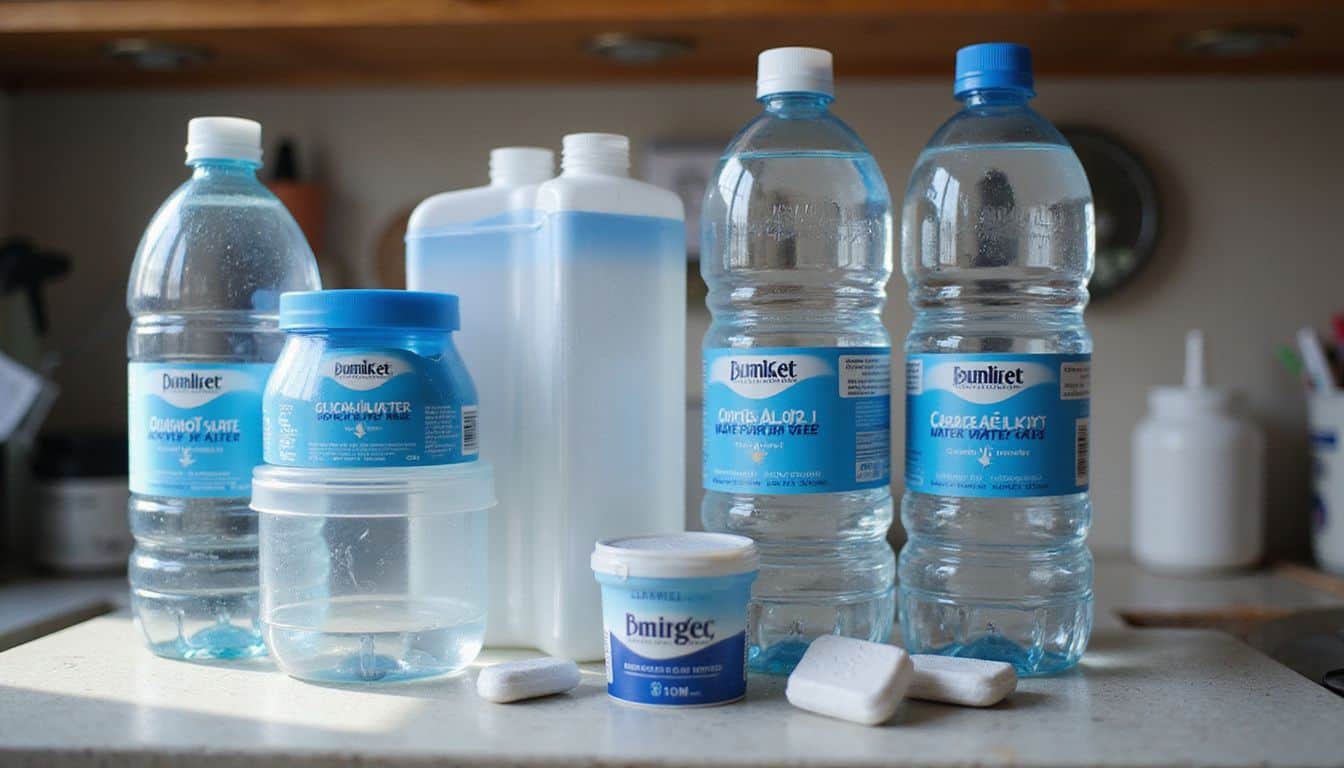
Water means life during a crisis, and you need to plan for it now. A good prepper stocks at least one gallon per person per day and learns multiple ways to make dirty water safe to drink.
Storing an adequate water supply
Clean drinking water can mean life or death during an emergency—so always prepare ahead. For each person in your household, keep at least one gallon of clean water per day, stored for a minimum of three days.
Ideally though, keep enough for two full weeks. On shelves in my garage right now, I store 56 gallons—enough for my family of four for fourteen days. I prefer clear plastic bottles or jugs.
They let me quickly glance over and see if the quality still looks good and safe. And don’t overlook your family’s bug-out bags; each person should carry a personal water bottle and a small portable filter too.
Water is life’s most basic necessity—store it like your life depends on it, because it does.
Make sure you prep your storage jugs carefully and safely. Before filling, I rinse each container using a gentle bleach mixture to wipe out bacteria and stop nasty stuff from growing later on.
Clearly write the storage date on every jug. Then swap them out every six months to ensure your emergency supply stays fresh, clean, and safe. Finally, store containers in dark, cool places away from sunlight.
Keeping them out of direct sun prevents algae and bacteria from forming and spoiling your clean drinking supply.
Using water purification methods
Safe drinking water is your main priority during an emergency—something I realized after losing power for three days following a heavy storm in our town. Knowing several ways to make water safe is crucial.
Boiling water at a rolling boil for around one minute kills most harmful germs. At home, we keep a Big Berkey filter handy, and on hikes or camping trips, a Sawyer Mini does the trick to eliminate harmful contaminants.
Both methods saved our family during unexpected mishaps on past camping adventures.
Another effective treatment is pool shock, or calcium hypochlorite, which disinfects water better than regular bleach. Pool shock lasts longer in storage and takes minimal space among your emergency supplies.
The SODIS method makes water safe by filling clear bottles and leaving them in direct sunlight for at least six hours to destroy germs. Distillation involves boiling water and capturing steam, leaving harmful substances behind.
To cover multiple scenarios, I carry bleach tablets in my bug-out bag and keep pool shock stored safely at home.
Investing in a reliable water filter
Clean water is your number one need, especially during an emergency. Small filters like Sawyer Mini and Sawyer Squeeze are excellent choices for preppers because they’re compact and convenient.
These filters need no electric power, making them ideal for your bug-out bag or home emergency supplies. For extra safety against harmful germs, you can combine these filters with chemical tablets.
Basic survival kits often include simple filters, but choosing a higher-quality option provides better peace of mind.
Top-notch water filters eliminate harmful bacteria, parasites, and other nasty contaminants. They remain portable and convenient enough for easy carrying. Choose a filter rated for at least 100,000 gallons, lasting you several years during emergencies.
Smart preppers usually have one filter in a bug-out bag, plus an extra filter stored at home. Having filters in both locations means you’re set whether you stay put or head out quickly.
Emergency Kits and Supplies
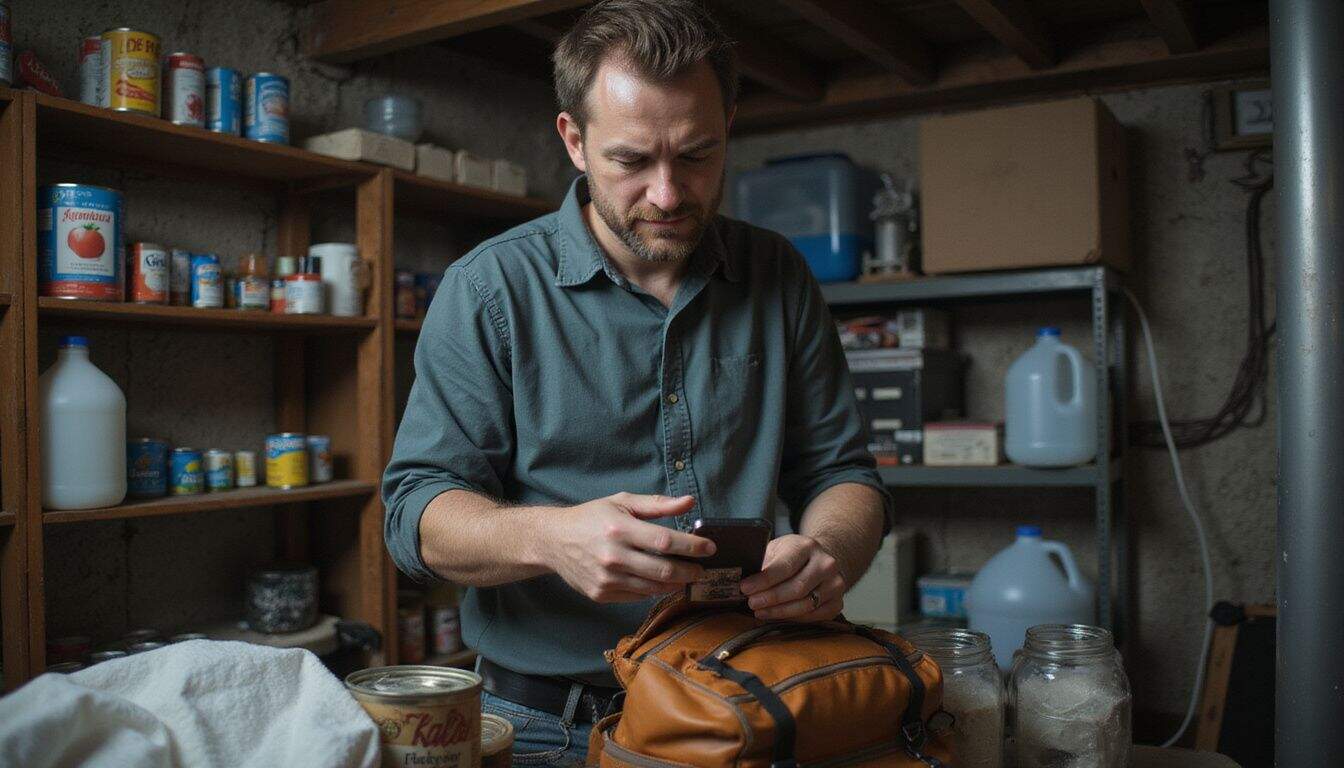
Emergency kits serve as your lifeline when disaster strikes, so pack them with care and store them where you can grab them fast – read on to learn what essentials belong in your bug-out bag, home kit, and vehicle supplies.
Assembling a bug-out bag
Your bug-out bag keeps you ready, covering your needs for at least 72 hours if you suddenly need to leave home. Pack essential non-perishable items like bottled water, energy bars, and foods that stay fresh without refrigeration.
Toss in a reliable battery-operated radio too, so you can stay updated during emergencies—and don’t skip a bright flashlight with spare batteries. A first aid kit also matters, stocked with bandages, antiseptic wipes, and any medicine you usually take.
Choose a comfortable backpack that fits your family’s unique needs and remains easy to carry. It must hold all essentials without becoming heavy or awkward. Think carefully about adding small bills of cash, copies of crucial documents sealed in waterproof bags, and a handy multi-tool for everyday tasks.
Your bug-out bag could one day keep you safe—so keep it ready, stocked, and check its contents about twice a year.
Key items for a home emergency kit
A bug-out bag helps with emergencies on the move, but your home kit keeps you safe when sheltering indoors is the better option. Every home kit must include reliable face masks, such as N95 or N100, to shield you from dust, smoke, or dangerous airborne particles.
A short while back, during a three-day blackout in our area, wildfire smoke blew into town—those masks really proved their value. A portable water purifier like LifeStraw is another essential, as tap water can turn risky during storms and natural disasters.
Also, think about adding a dependable emergency radio with built-in flashlight features—like the Midland ER310—to keep yourself updated when cell signals drop off.
Home kits should also hold basic personal care products, battery-operated gear, and a minimum of three days’ worth of ready-to-eat foods. Vacuum-sealed snacks work great, along with staples such as potato flour or white flour, to provide extra calories during tough periods.
Include first-aid materials to treat minor injuries, plus medicines you regularly need. Pack additional medication, disinfectant wipes, and plenty of bandages inside waterproof containers to keep them clean and dry.
Finally, store your emergency gear in tough containers, placed somewhere easy to reach yet safely distant from hazards.
Preparing a car emergency kit
Your car needs a reliable emergency kit—you never know what trouble you’ll face. I check mine twice a year, making sure everything still functions properly. Essential items include a spare tire, jumper cables, a toolkit, and first-aid supplies.
These basics might save you from getting stranded along some empty stretch of road. Pack foods high in energy that last, like protein bars or nuts, and don’t forget multiple bottles of water.
Last winter, my emergency kit saved me during a snowstorm—the granola bars and emergency blanket kept me going until help arrived.
Smart preppers update their kits with seasonal supplies. In colder months, include extra gloves, hand warmers, and an ice scraper. For hot weather, sunscreen and additional bottles of water become essential.
Your bug-out bag usually stays home, but the car emergency kit is your constant companion. Next, we’ll talk about keeping clean and staying healthy when facing emergencies.
Hygiene and Sanitation Prepping

Staying clean during a crisis matters just as much as having food and water. You need a plan for personal care and waste disposal when normal systems fail.
Stocking hygiene products
Good hygiene helps you stay healthy, especially during emergencies. Be sure to store enough soap, dental supplies, and hair care products to last several months without refrigeration.
A week-long power outage taught me how much clean teeth and hands improved my mood—small things matter greatly in tough situations. Keep disposable gloves and garbage bags ready, too, for safe waste disposal.
Simple items like these can reduce disease risks if regular systems break down. Men sometimes skip feminine hygiene supplies, but these products are vital for women in your household or survival group.
Many preppers seal hygiene supplies in vacuum bags, saving space and keeping items fresh longer.
Managing waste during emergencies
Toilet issues become serious fast during disasters. A week-long blackout taught me that—it left me scrambling for answers about human waste disposal. A simple, effective solution is using a regular 5-gallon bucket.
Line the bucket with sturdy trash bags, and cover waste with sawdust or kitty litter after each use—it keeps odors manageable. If you’re stuck outdoors, dig a small hole about 6-8 inches deep, at least 200 feet away from any water sources, and bury waste carefully.
This basic trick works great during times when typical bathrooms aren’t around.
Wise preppers often see human waste as useful—rather than just gross. For instance, urine, once diluted with water at a 10:1 ratio, can safely feed plants that aren’t grown for food.
Solid waste can also turn into useful compost, but only if processed separately from edible crops and handled with clear safety steps. Good waste handling stops diseases from popping up, especially during crises when healthcare isn’t easy to find.
Keeping clean with hygiene supplies goes side-by-side with managing waste—it helps keep your family safe and healthy.
Medical and First Aid Prepping

Medical prepping could save your life when hospitals aren’t an option. Stock up on bandages, pain relievers, and prescription meds before you need them.
Gathering essential first aid supplies
A reliable first aid kit can make all the difference during tough emergencies. You should always start with basics like adhesive bandages, gauze pads, and antiseptic wipes. Once, on a camping trip, I cut myself and quickly realized I had no decent supplies nearby—that painful moment taught me the importance of preparation.
Be sure to include common over-the-counter medications too. Pain relievers come in handy if injuries or headaches crop up, while antacids ease stomach problems brought on by stress.
Antihistamines also help control allergic reactions that tend to happen outdoors. Don’t overlook simple items like bar soap and hand sanitizer, which prevent many health problems if you keep clean.
Pack your medical first aid supplies neatly in a compact, waterproof container—mine is bright red so I can quickly spot it among other gear. Make sure every family member knows exactly where your emergency kit sits.
Keep supplies fresh and replace them before expiration dates hit. You can even put in additional items, depending on your family’s unique health needs. Proper gear and a little basic know-how can truly turn a crisis into something manageable—especially if hospitals or emergency services aren’t available.
Including over-the-counter medications
Your medical kit needs more than bandages and gauze—it needs common medications too. Include pain medicines, like acetaminophen or ibuprofen, in your emergency stash. Years ago, I realized just how valuable this is during a three-day blackout.
My neighbor’s kid suddenly spiked a fever, and their medicine cabinet had nothing inside. Luckily, we had extra supplies ready, which helped them a lot.
Beyond pain relievers, pack allergy pills, cold medicine, and upset stomach treatments. These basic items become extremely valuable during emergencies when hospitals get crowded. Lots of preppers overlook these essentials—they usually focus on food or water instead.
It’s smart to keep at least 30 days’ worth of these meds in a cool, dry spot. Twice a year, look over expiration dates carefully, and swap out anything that’s past its prime. Keeping these medical basics handy could save someone’s day—or even yours.
Power and Energy Preparation
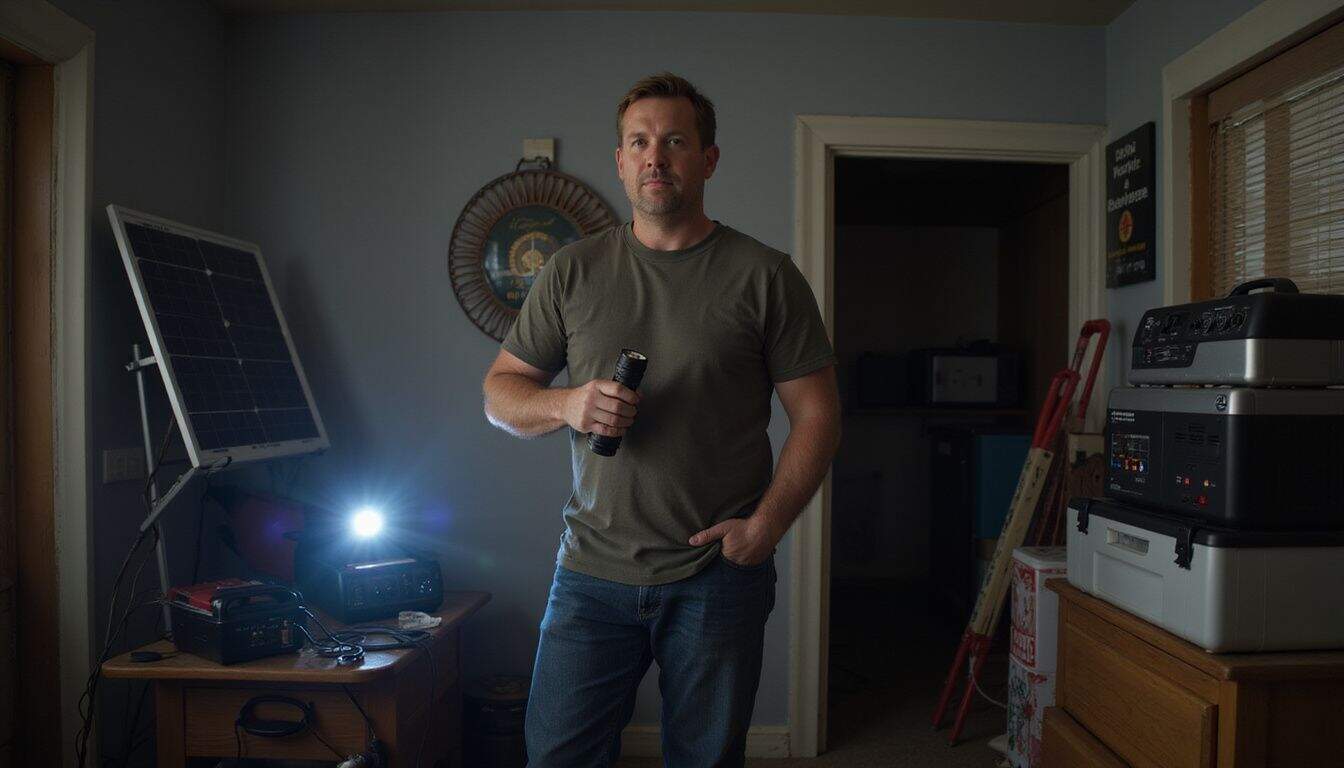
Power outages can happen at any time, leaving you in the dark and without basic comforts. A good prepper plans for this by having backup power sources like solar chargers, generators, and plenty of batteries on hand.
Backup power sources
Losing electricity during an emergency can quickly take things from bad to worse. Every prepper needs reliable backup methods ready to use. Generators give instant electricity—but only until the fuel runs out.
I experienced this personally during a week without power; my gas supply lasted only three days. LED flashlights and battery-powered AM radios are perfect for reliable emergency lights.
These items consume less power and have batteries that last longer compared to traditional versions. For preserving food, consider a solar-powered DC freezer to keep groceries chilled without relying on the grid.
A portable solar power station provides quiet and dependable energy with no fuel required. These devices gather and store energy from solar panels, charging your phone, powering small electronics, or running medical equipment like CPAP machines.
Battery banks also prove useful during short blackouts. My family places small battery banks inside each emergency kit; this way, our phones and devices stay powered. Propane camp stoves or outdoor grills help you prepare hot food when your electric stove stops working.
Always keep extra propane tanks safely stored outside your home, and never near living areas.
Cooking without electricity
Your kitchen won’t do much good during a power outage, so you’ll need other plans for cooking meals. At my cabin, I keep at least four different cooking options ready: a propane camp stove, a solar oven, a rocket stove, and a cast iron setup to cook over a fire.
Solar ovens are perfect on clear days—they need no fuel at all. Rocket stoves burn small sticks, get very hot, and produce almost no smoke. Last winter, my family tested these cooking methods during a three-day blackout.
We ended up eating better meals than many neighbors who hadn’t planned ahead.
Make sure you set these cooking tools up outdoors or in areas with plenty of airflow. Carbon monoxide from cooking inside without proper ventilation has caused many deaths among preppers who didn’t take precautions.
Install carbon monoxide detectors close to any spot you’ll be cooking in emergencies.
Next, we’ll cover heating solutions to stay comfortable whenever power outages leave you cold.
Heating solutions for power outages
Winter power outages caused 23% of all blackouts between 2000 and 2023—showing just how important backup heat sources are. Being ready ahead of time makes a huge difference once the lights shut off.
Portable heaters offer multiple solutions to keep your home warm. Indirect-fired heaters safely warm air outside the living area and then circulate it inside. Flameless heaters use a catalytic process rather than an open flame, making them safer indoors.
Direct-fired models burn fuel directly, giving you quick heat in cold emergencies. Self-contained units skip the need for electricity, operating independently. Electric heaters pair easily with emergency generators, though they draw lots of power rapidly.
With any heating option, safety stays at the top of the list. Always place carbon monoxide detectors close to sleeping spots. Keeping rooms ventilated correctly helps prevent dangerous gas buildup if you’re using fuel-based heaters.
For smaller spaces, cast iron pots heated on camp stoves provide gentle warmth. Sleeping bags designed for cold weather become essentials, helping you sleep warmly without relying on electricity.
Keep plenty of extra blankets handy, wear thermal clothing layers, and have a clear plan to keep at least one room warm for several days without power.
Core Survival Skills
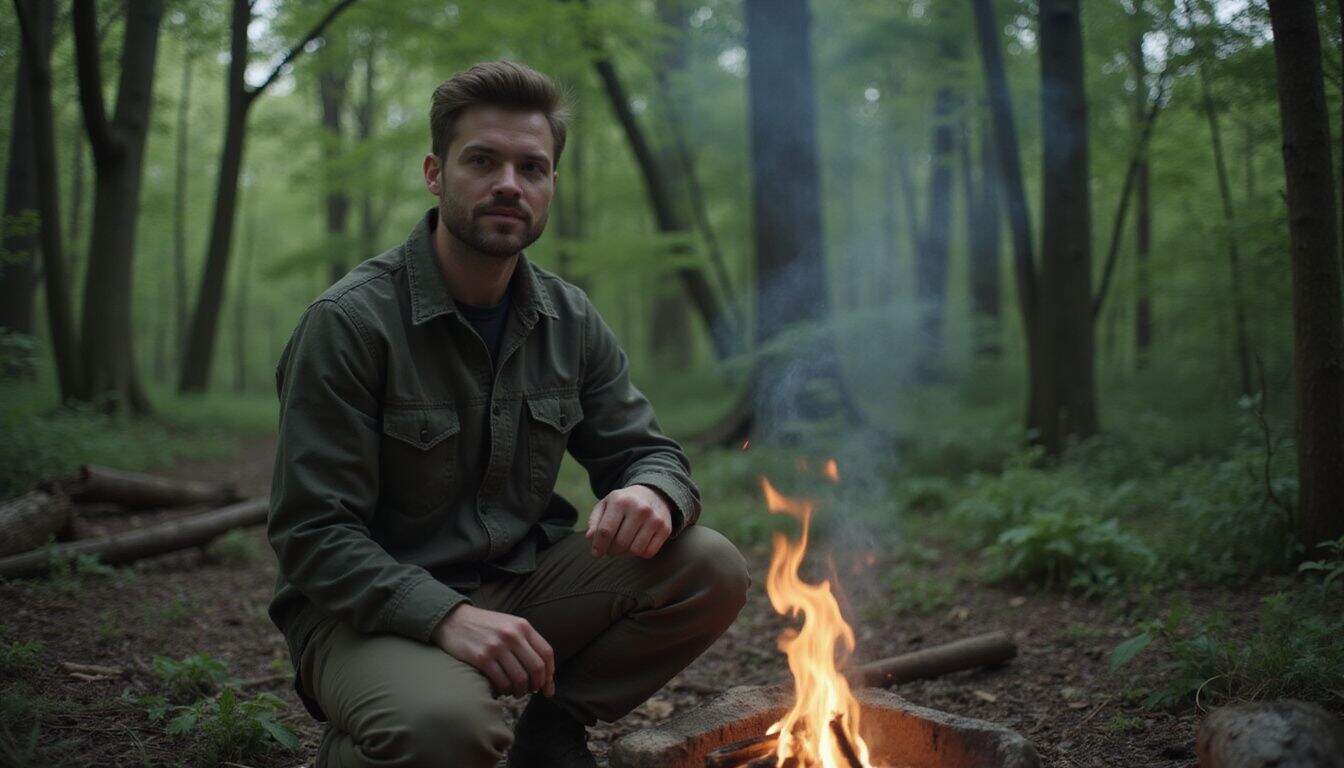
Survival skills can make the difference between life and death when disaster strikes. You need to know how to use your gear, start a fire, find shelter, and handle basic first aid before you need these skills.
Learning basic survival techniques
Having basic survival skills can make or break your prep plan. Before an emergency happens, get good at vital abilities—starting fires, tying strong knots, and putting up shelters.
The American Red Cross offers helpful training courses on these topics, along with first aid and CPR, skills that could mean life or death during tough times. Also, practice regularly with your equipment in various weather conditions, building your memory and confidence along the way.
Pack essential tools in your bug-out bag to match your survival skills: reliable fire starters, durable paracord, and a small, practical first-aid kit. Making water safe to drink is another essential skill—humans can survive only about three days without clean water.
Get familiar with several ways to purify water: boiling it, using chemical treatments, or filtering methods. Practicing these survival methods often helps turn what you’ve learned into concrete skills you’ll trust during critical situations.
Practicing with your gear
Gear stored away, gathering dust, won’t save you in emergencies. Last year I bought a high-end fire starter, then totally fumbled with it on a camping trip. Using survival gear regularly creates muscle memory, helping you react calmly under stress.
Practice with your knives, fire starters, and communication gear every month. On a nice weekend, pitch your emergency shelter in your backyard. Cook dinner using just your survival stove and prepped supplies.
Doing these practice drills sharpens your reaction time and reveals gaps in your plans before trouble arrives.
Your bug-out pack also needs real-world trials. Many preppers fill their packs, but never carry them very far. On a five-mile hike, an improperly adjusted bag left my shoulders aching—a lesson learned the hard way.
Actually test your water filter on creek water, but boil it afterward for safety. Also, sample emergency food now, to see if you can handle it long-term. Another essential skill is handling human waste safely during emergencies, especially if regular sanitation stops working.
Maintaining your equipment
Survival equipment demands regular care, or it might fail during critical moments. Knives must always be sharp, batteries in flashlights fresh, and water filters clean. Too many preppers purchase gear, toss it aside, and forget it—leaving it unreliable in emergencies.
So, set a specific monthly date to test each item carefully. Check lanterns for brightness, stoves for proper burning, and confirm your bug-out bag has every necessary item inside.
Also, wipe your metal tools lightly with oil to stop rust, and keep gear stored somewhere dry, distant from hot or freezing places.
Ignoring your equipment can cause it to fail you at exactly the wrong time. Your life could easily depend on a working fire starter or clean water from your filter. Inspect expiration dates on batteries and medical supplies every three months at least.
Replace supplies before they expire—not after they’ve gone bad. Many experienced survivalists combine their gear inspections with scheduled food rotations. This routine helps you build muscle memory, quickly spot issues, and keep ready for anything.
Situational Prepping Strategies
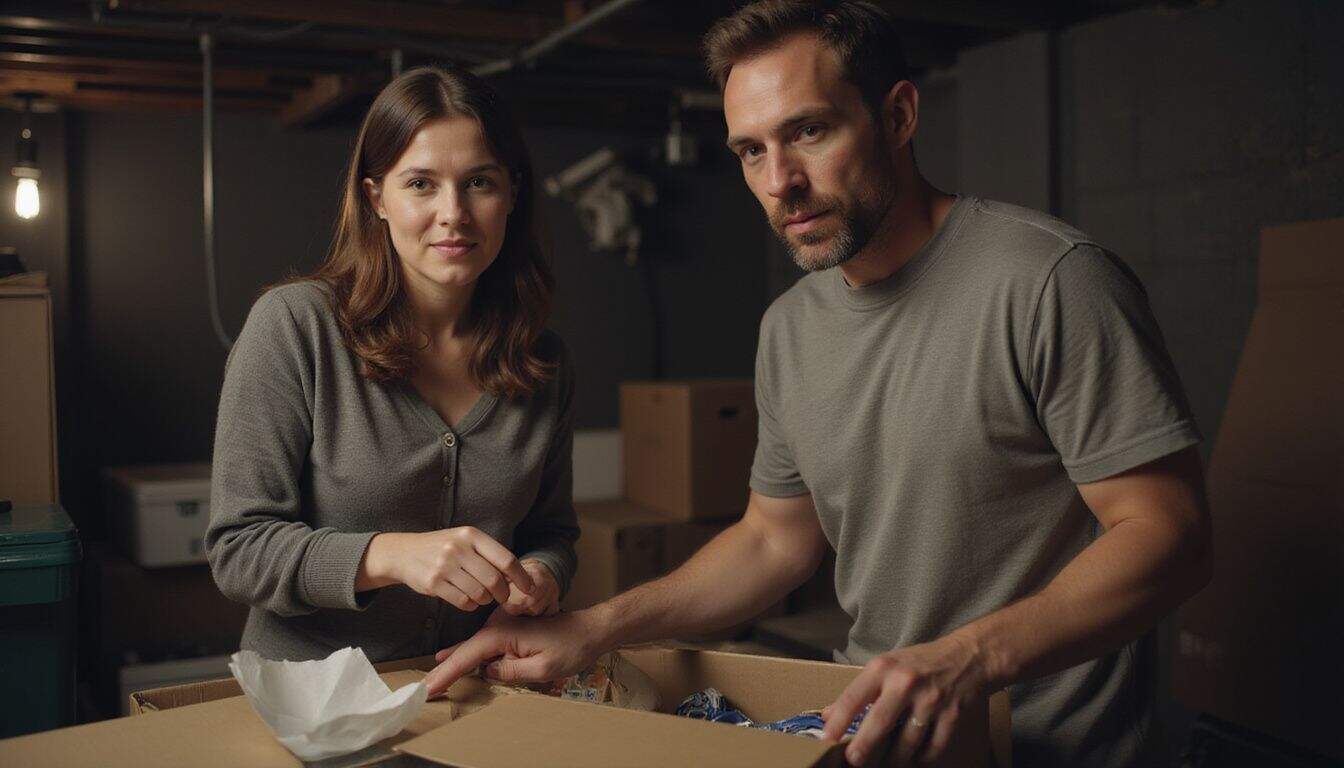
Your prep plan must change based on the threats you face in your area, from floods to power grid failures. Learn how to adapt your supplies and skills for your unique risks….
Prepping for natural disasters (wildfires, hurricanes, tornadoes)
Natural disasters often happen suddenly, and you need clear plans for each risk common in your area. Last summer, a wildfire nearly burned down my house—I learned the importance of having a solid wildfire plan firsthand.
To prepare for wildfires, clear away bushes and trees near the home, creating a protective, fire-resistant space. Keep a grab-and-go bag with important documents, cherished photos, and other essentials ready at all times.
During hurricane seasons, store extra drinking water, as floods frequently damage community water supplies. Also, board windows securely and tie down loose outdoor items that could blow around dangerously in high winds.
For tornado safety, set up a secure shelter room inside your home, stocked with necessities, and include a weather radio to get quick updates. Build an easily portable emergency supply box—with three days’ worth of non-perishable food, drinking water, basic tools, and hygiene items—that you can grab fast.
Choose a safe location away from dangerous areas but within a reasonable driving distance.
Having a complete medical kit also matters greatly in emergencies, just like food and water supplies. Injuries can happen quickly during severe storms or while escaping fires, so include bandages, antiseptic supplies, important meds, and emergency blankets.
Next, we’ll cover strategies to manage lengthy power outages that commonly follow natural disasters.
Preparing for extended power outages
Power outages often happen suddenly—and can last days. Savvy preppers always have backup power ready. Solar chargers are perfect for smaller items, like radios and cell phones. For lighting, crank-powered flashlights are reliable; they need no batteries and function in any weather.
Your car, surprisingly enough, can also charge gadgets—just remember to keep the gas tank topped off. Keep extra batteries stored safely in a dry, cool place for all critical gear.
Many preppers also put money into gasoline generators or portable power stations to run small appliances. These options offer basic comforts and ease stress during blackouts.
A home lighting plan is essential for dark nights without electricity. Put flashlights in hallways and rooms for easy grab-and-go convenience. Battery-powered lanterns offer brighter, wider coverage compared to regular flashlights.
Cooking meals without power also needs advance planning. Simple solutions, like propane grills, camp stoves, or canned heat, allow you to cook food and boil water easily without electric power.
Cash is another important prep, since ATMs and card readers won’t function during lengthy outages. Next up, we’ll discuss connecting with fellow preppers to swap tips, ideas, and supplies.
Tailoring strategies to your environment
Your location greatly affects your prepping needs. Folks in mountainous regions should stock up on gear suited for cold, harsh conditions. Coastal residents, though, face totally different challenges, like hurricanes or flooding threats.
I found this out firsthand—stuck for three days in a blizzard with zero electricity. My pantry stayed stocked with food, sure, but my heating plan completely failed.
Each place deals with specific risks. Desert areas must handle extreme heat dangers, while flood-prone spots require clear evacuation routes. Get familiar with your neighborhood’s usual weather issues and common emergencies.
City residents usually benefit from compact, portable emergency bags. Rural residents, on the other hand, often have enough space to keep larger supply stashes.
Even the layout of your home counts. Apartment dwellers usually need smaller, easy-to-grab kits, but homes with basements offer built-in storage space. Always match your emergency preparation carefully to your living situation.
Connecting with the Prepper Community
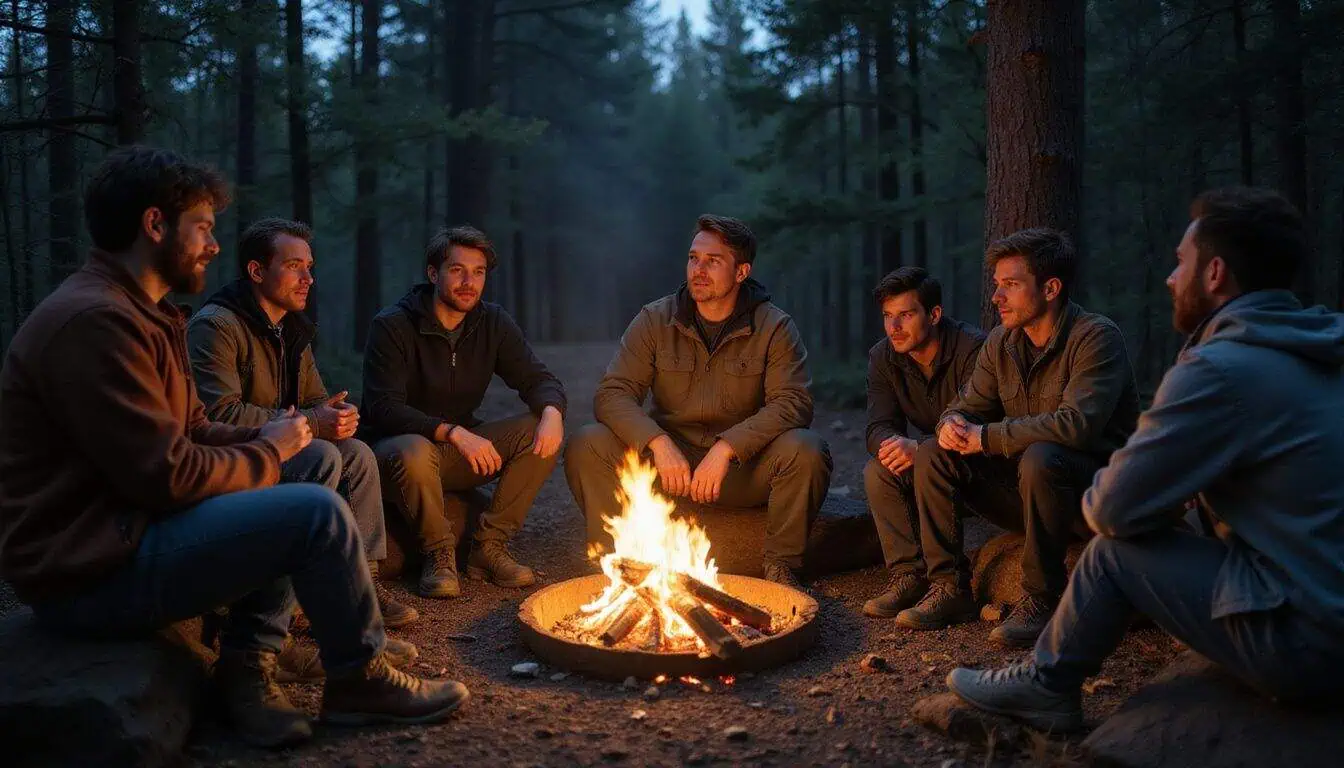
Joining a prepper group can teach you skills you won’t find in books or videos. You’ll make friends who share your goals and can help during tough times.
Joining local or online prepper groups
Partnering with fellow preppers can greatly improve your odds of surviving tough situations. I found a prepper group through a local community board—it completely transformed my emergency planning.
Joining forces lets everyone benefit by exchanging valuable resources, knowledge, and practical skills. Seek out members who have stable personalities, different survival abilities, and useful expertise.
My group includes a former firefighter, an experienced nurse, and even a gardening specialist—these combined talents come in handy during practice exercises.
Clear rules and frequent meetings keep the group organized and focused. My team gathers twice every month to practice crucial skills and refresh our emergency strategies. Each of us takes a turn hosting a training session, demonstrating practical topics like purifying water, storing food safely, and basic first aid skills.
These frequent meetings build community, offer emotional support, and bring real-world help—something solo preppers often lack. Online communities, forums, or social media pages are great ways to connect if you can’t find local prepper clubs nearby.
Many members even show up to meetings carrying practical items—backpacks stocked for emergencies, portable water filters, or canned goods to share with others during drills.
Sharing knowledge and experiences
Joining a prepper group can give you valuable skills you might lack. I saw this myself after meeting some local preppers—they showed me smart ways to filter water that weren’t in any of my books.
Online forums and prepper groups on social media are great places to exchange advice about emergency planning and what to pack in a bug-out bag. These networks really matter because collaborating boosts everyone’s ability to share resources.
Many community groups even run hands-on workshops, teaching useful skills like preserving food or cooking meals with pots over open flames.
Swapping knowledge with other preppers builds strong connections, which can really pay off if emergencies hit. Last spring, our local group ran emergency drills together; this practice uncovered gaps in our own plans that none of us had spotted alone.
Some folks are experts at keeping freeze-dried foods fresh and ready, while others have better insight into handling mental health issues during stressful situations. Having a mix of different skills helps keep everyone safer.
The most effective prepper communities even spread the word about discount supplies at amazon.com or bargains found in neighborhood stores, helping each member stock their pantries without overspending.
Maintaining and Rotating Supplies
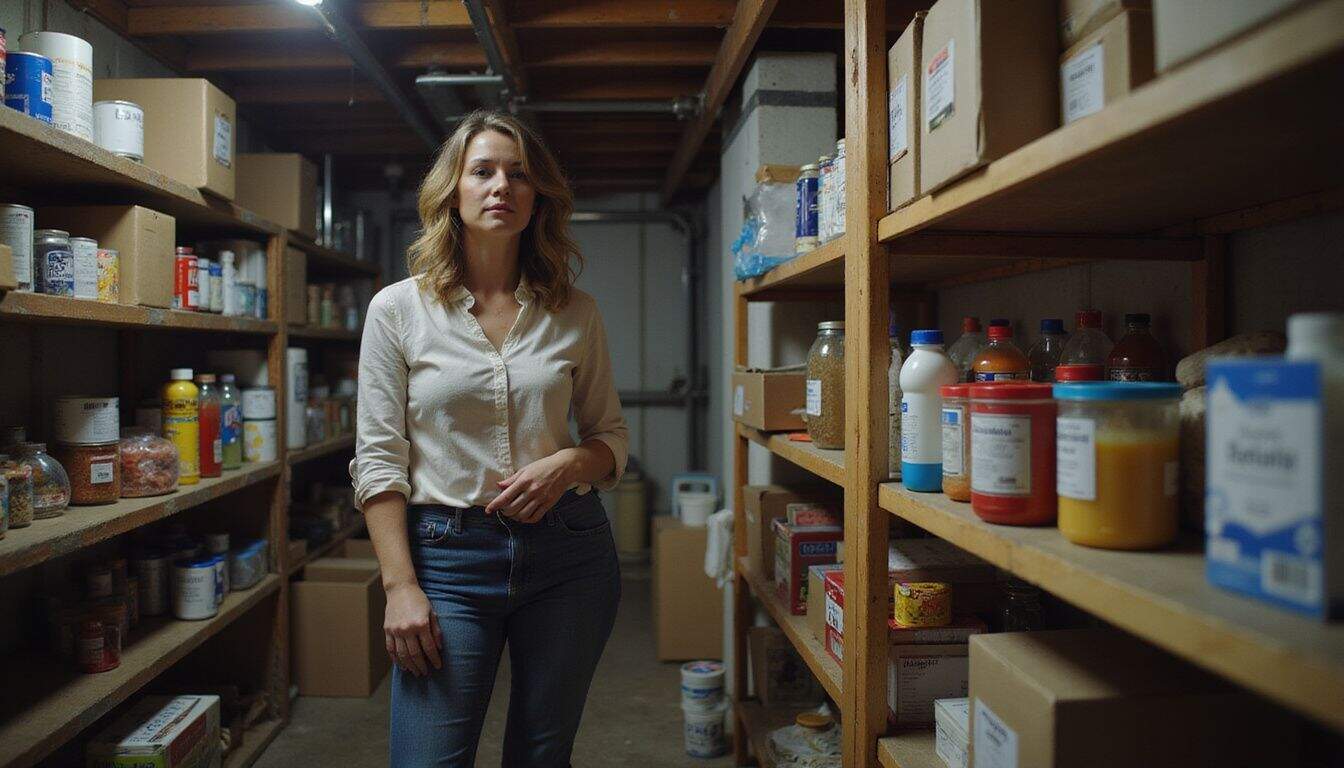
Your prepper supplies need regular checks to stay useful in a crisis. Fresh items must replace old ones before they expire, keeping your stockpile ready for action.
Keeping your prepper pantry organized
A prepper pantry that’s tidy and organized can save precious time in an emergency. The FIFO method (First In, First Out) works wonders for cutting down waste. Just place your newest goods behind older supplies on each shelf—this way, older food gets used first.
This simple habit keeps staple items and packaged foods fresh and ready to use.
Thinking vertically also gives you more room for storage. Try adding extra shelves up high or using clear bins—you can group things like rice, dried beans, or freeze-dried meals all together.
Another helpful strategy is the Six S’s method, which helps keep pantries tidy and usable. Sort what you have, set each item neatly in place, shine by regularly cleaning up, standardize the way you store things, sustain your system, and always plan with safety in mind.
Vacuum-sealed containers keep pests away, making it much easier to grab what you need in an urgent situation.
Rotating food and water supplies regularly
Food rotation is key to practical prepping. I learned this the tough way—digging through basement supplies and finding expired canned food wasn’t fun. The easiest solution is FIFO, or “First In, First Out”, putting new items behind older ones on pantry shelves.
This basic approach helps you use what’s oldest first. Check your emergency pantry monthly for outdated staples, freeze-dried food, and bottled drinks. Every four weeks, I pull out products nearing expiration and add fresh replacements.
Water storage deserves similar care. Even water won’t last indefinitely. Plastic containers eventually leak chemicals, and water sitting too long can grow algae. My family writes storage dates clearly on each jug and replaces stored water every six months.
We drink older water daily and refill containers regularly with fresh water. Rotating this way maintains safe emergency drinking water and avoids waste. Bug-out bags also need routine check-ups—replace water pouches, energy drinks, and dried foods before they spoil.
Advanced Prepping Considerations
True prepping goes beyond basic supplies into long-term survival systems. Your next steps include learning to grow food, setting up home security, and building a cash reserve for when banks fail.
Long-term food production (gardening, foraging)
Growing your own food offers a big advantage, especially when groceries run low. You can start your own survival garden using raised beds; these beds let you manage soil quality and lengthen your growing season.
Adding clay ollas into garden soil provides steady, slow-drip watering directly to plant roots, reducing water waste. Rain barrels also help by catching rainfall, giving you backup water for thirsty plants during dry weather.
Planting perennial food sources like fruit and nut trees saves effort and delivers long-lasting results. These trees supply high-calorie foods year after year, needing little care once they’re fully grown.
Many preppers grow staple crops like potatoes and add gluten-free plants too, ensuring everyone’s dietary needs are covered in tough times.
Foraging is another great way to get fresh, free food without needing any extra garden space. Learning local edible plants ahead of emergencies gives you nutritious meals at zero cost.
Often, wild plants offer even more nutrients than grocery-store versions. Practice spotting these plants on weekend hikes, building your skills step by step with every outing. Smart preppers combine gardening and wild plant knowledge to create a complete, reliable food plan—even in long-term emergencies.
Self-defense and security measures
Your home security matters, especially if law enforcement can’t arrive quickly during difficult times. Our guide contains 122 pages covering practical home-defense strategies that actually work.
Savvy preppers often add strong locks, install motion-sensor lights, and prepare a stocked safe room inside their home. Personally, I keep a sturdy baseball bat within reach and learned basic self-defense skills through classes.
Firearms can also offer effective protection—but only after you spend enough time learning to shoot a gun and practicing regularly.
Less-lethal self-defense tools, like pepper spray or tasers, can also serve you well in cases where deadly force isn’t necessary.
A well-packed bug out bag includes personal protection tools alongside basic emergency items like food and water. Many preppers find local community groups helpful for exchanging security advice and establishing neighborhood watch programs.
It’s smart to keep health insurance cards handy too, because medical assistance might become scarce during emergencies. Security plans should always reflect individual circumstances—city life brings different hazards than living in the country, so make sure your preparation suits the threats you’re likely to face.
Financial prepping for economic disruptions
Smart financial planning goes beyond just securing your home—it forms the foundation for genuine preparedness. Money struggles tend to hit hardest in emergencies; in fact, 41% of Americans can’t handle an unexpected $1,000 expense.
I saw this firsthand during the 2008 recession, as my savings kept my family afloat while neighbors lost everything they owned.
Start by building an emergency fund that covers three to six months of daily expenses. Pay off debt quickly, since nearly 80% of people still carry financial burdens they don’t need.
Keep some cash handy at home, too, in case banks shut down or ATMs become unavailable. It’s also wise to spread your assets across different types, such as precious metals or stable goods, to be extra safe.
Risk assessments confirm that having financial cushions greatly reduces stress during tough economic times compared to living paycheck to paycheck. Beyond reducing stress, having financial stability often improves overall health—since constant worry about money can cause chronic health problems.
How Will Prepping Evolve in 2025?
Prepping in 2025 will lean heavily on tech solutions to manage emergencies. Solar power units will get smaller, cheaper, and easier to install, helping people keep basic lights and appliances running during outages.
Better risk-analysis apps will guide folks based on their area’s particular threats—like floods, storms, or wildfires. Food planning will shift more toward long-lasting, tasty freeze-dried meals, which can stay fresh even longer on shelves.
Health preparation will see greater emphasis on chronic illnesses and heart problems, ensuring people stay safe during tough times.
Home systems will soon become part of prepping, automatically tracking water usage, food stocks, and energy levels. Bug-out bags will receive upgrades too, with lighter gear and multi-use gadgets making them easier to carry and more useful overall.
The prepping crowd will continue to grow beyond traditional demographics, as climate-related situations affect more regions and communities. Money-related prepping will become a bigger deal, as digital currencies provide viable options beyond physical cash storage.
Improved vacuum-sealed packaging will extend shelf life for specialized diet foods—like gluten-free products—making dietary needs simpler to manage in challenging situations.
People Also Ask
What basic supplies should I have for emergency preparedness?
Grab basic staples like rice, dried beans, and freeze-dried meals—these keep for years. Have plenty of clean water stored in safe containers. Don’t forget essential cookware, along with toiletries and hygiene supplies. Prepare bug-out bags for each family member with first aid kits included.
How can I manage water needs when SHTF?
Store drinking water in clean, sealed containers beforehand. Collect rainwater using simple buckets or barrels. Set up a simple gray-water system—reuse sink water for watering plants or flushing toilets. Water matters for cooking, cleaning, and staying hydrated.
What foods last longest in an emergency?
Dehydrated and vacuum-sealed foods last for years. Keep plenty of dry basics—rice, beans, and pancake mix—plus canned goods. Comfort items like hot chocolate, fruit juices, and favorite snacks help morale.
How do I plan for family members with health issues?
Stock extra medications for people with chronic illnesses like heart conditions or diabetes. Keep special dietary foods, like gluten-free snacks, if required. Also, plan emergency routes to hospitals and know the quickest ways there.
What rooms in my house should I focus on preparing first?
The kitchen comes first—stock up on food and cooking gear. In bedrooms, store emergency grab-and-go bags near beds. Bathrooms need extra soap, cleaning supplies, and personal hygiene products.
How do professionals approach emergency management?
Firefighters and emergency planners study risk carefully to handle unpredictable situations. They balance short-term needs—food, water, shelter—with long-term factors like physical health. They encourage fitness and proper nutrition to maintain mobility and strength during emergencies.
References
https://trueprepper.com/prepper-risk-assessment/
https://www.focusonthefamily.com/parenting/step-by-step-guide-to-building-a-family-emergency-plan/ (2024-08-27)
https://theprovidentprepper.org/steps-to-build-a-successful-family-emergency-plan/
https://weloveprepping.com/blog/shtf-supplies-checklist-for-beginners/
https://theprepared.com/prepping-basics/guides/emergency-preparedness-checklist-prepping-beginners/
https://cdcgroup.com/index.jsp/libweb/386645/PreppersLongTermSurvivalGuide.pdf
https://www.julienaturally.com/how-to-start-being-a-prepper/ (2022-12-21)
https://www.fcs.uga.edu/extension/preparing-an-emergency-food-supply-long-term-food-storage
https://theprepared.com/homestead/guides/supermarket-food-list/
https://www.backdoorsurvival.com/survival-basics-water-and-water-storage/
https://www.backdoorsurvival.com/emergency-water-for-preppers-purification/ (2020-11-24)
https://www.sawyer.com/blog/true-prepper-best-survival-water-filters-tested-and-proven
https://www.tactical.com/poor-hygiene-shtf/
https://www.offgridweb.com/survival/survival-sanitation-dealing-with-the-s-in-shtf/ (2019-09-12)
https://gubbahomestead.com/survival/medical-items-to-keep-on-hand-for-when-shtf/
https://www.backwoodshome.com/prepper-power-2/
https://thesurvivalmom.com/off-grid-cooking-methods/
https://www.dau.edu/sites/default/files/2024-01/COOKING-WITHOUT-ELECTRICITY.pdf
https://www.menofstrengthusa.com/shtf-gear/
https://eldritchdata.neocities.org/PDF/U/ThePrepperSurvivalBible.pdf
https://survivaldispatch.com/preparing-for-natural-disasters-eight-steps-for-survival/
https://prepperpress.com/shtf-plan/ (2022-05-11)
https://tac-skills.com/prepper-community-strategies/
https://morethanjustsurviving.com/food-stockpile-rotation/ (2016-04-22)
https://theprovidentprepper.org/best-strategies-for-growing-a-reliable-survival-garden/
https://theprepared.com/homestead/guides/gardening/
https://www.amazon.in/Preppers-Ultimate-Defense-Prepping-Survival-ebook/dp/B0C5TJZMWB
